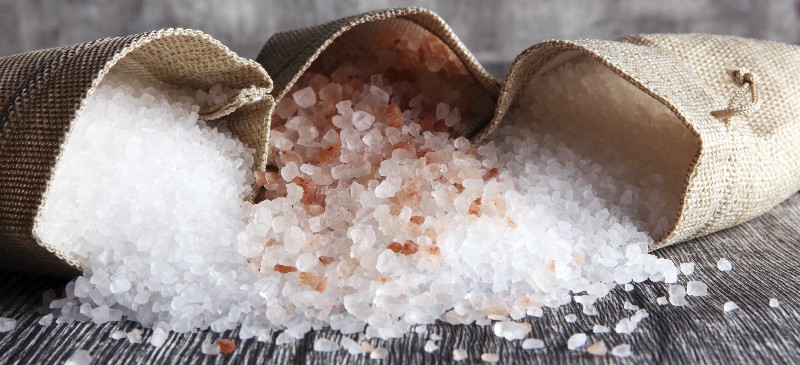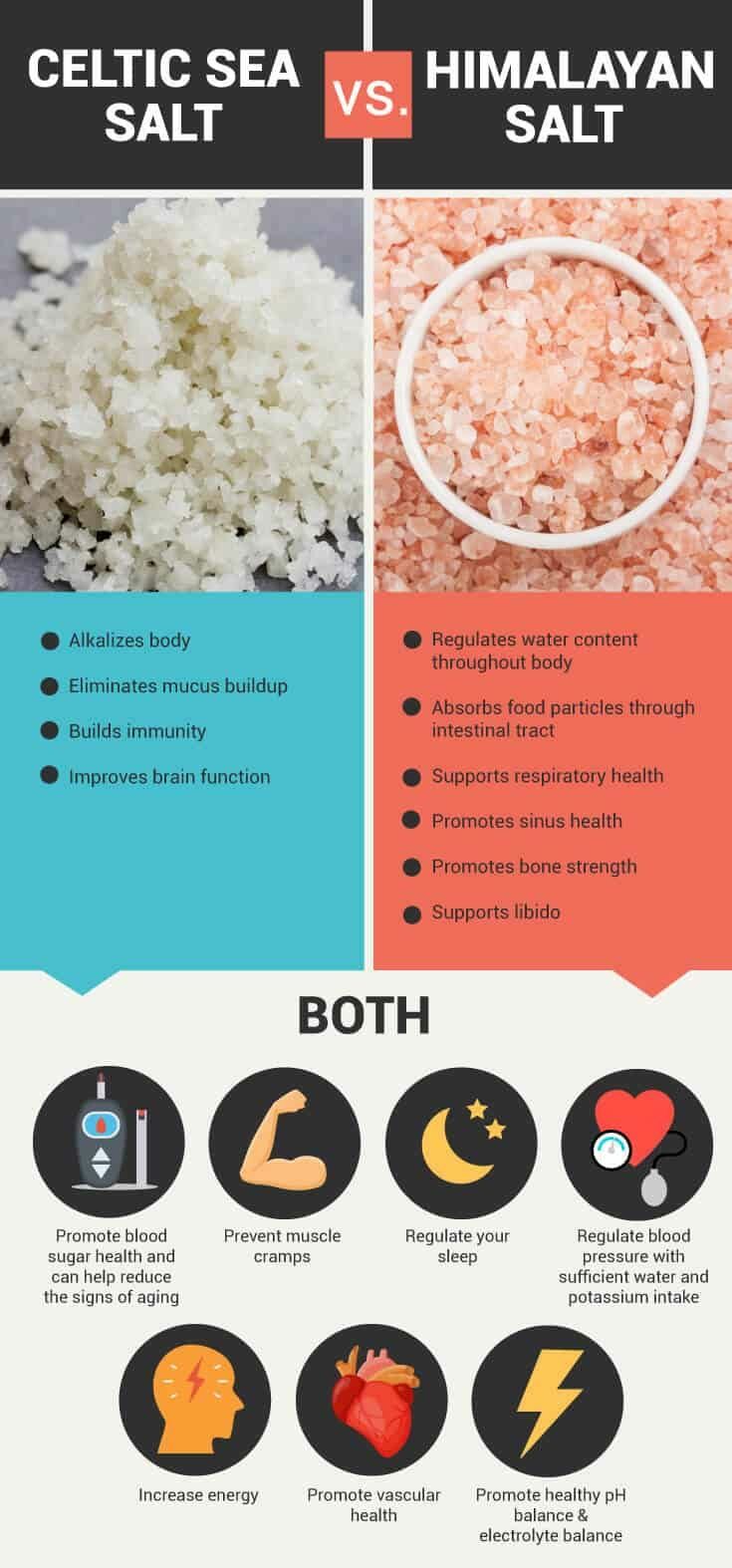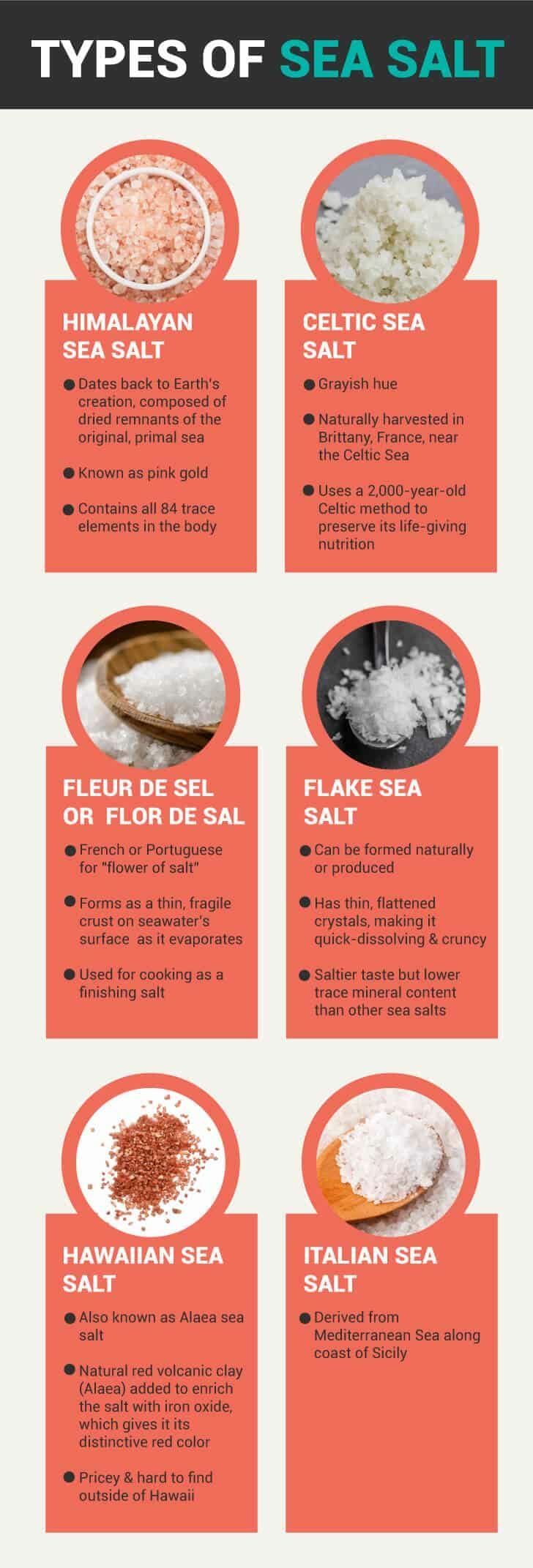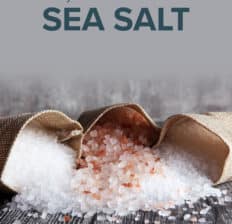This Dr. Axe content is medically reviewed or fact checked to ensure factually accurate information.
With strict editorial sourcing guidelines, we only link to academic research institutions, reputable media sites and, when research is available, medically peer-reviewed studies. Note that the numbers in parentheses (1, 2, etc.) are clickable links to these studies.
The information in our articles is NOT intended to replace a one-on-one relationship with a qualified health care professional and is not intended as medical advice.
This article is based on scientific evidence, written by experts and fact checked by our trained editorial staff. Note that the numbers in parentheses (1, 2, etc.) are clickable links to medically peer-reviewed studies.
Our team includes licensed nutritionists and dietitians, certified health education specialists, as well as certified strength and conditioning specialists, personal trainers and corrective exercise specialists. Our team aims to be not only thorough with its research, but also objective and unbiased.
The information in our articles is NOT intended to replace a one-on-one relationship with a qualified health care professional and is not intended as medical advice.
Sea Salt vs. Table Salt: Benefits, Types, Uses, Side Effects and More
March 6, 2025

Salt, including sea salt, has been used as a natural flavoring agent for thousands of years, and it’s so vital to our existence that a portion of our tongues is even designated to taste saltiness.
However, in recent years, salt has come under fire and been characterized as an unhealthy substance that we should cut out of our diets in favor of heart health. That being said, not all salt is created equal, and there is definitely a difference between unrefined, mineral-rich varieties like sea salt versus salt that has been heavily processed and stripped of all of its natural nutrients.
So is sea salt good for you? Does sea salt have iodine, and which types are best when it comes to your health?
Let’s find out.
Sea salt vs. table salt
All types of salt, including table salt, originate from a sea or a salty body of water, but not all salts currently on the market actually come from the oceans in existence today.
What does that mean? Salts that are not sea salt are often derived from underground salt deposits left behind by seawater at some point.
Sea salt is a type of salt produced from the evaporation of current seawater. The evaporation is accomplished by either open-air solar evaporation or by a quicker vacuum evaporation process.
Some of the pricier sea salts available today often come from the slower sun-fueled evaporation method.
When you eat a sea salt that has experienced very little processing, you have a salt that contains health-promoting trace minerals. It also has natural flavors and colors that make it a lot tastier and more interesting to use for cooking as well as homemade beauty products.
Sea salt can be either unrefined or refined, although unrefined sea salt is generally recommended to maximize its potential health benefits. Refined sea salt, on the other hand, is washed to strip it of its trace minerals and often contains harmful food additives.
Salt has always been essential to human life since humans need sodium in order to survive.
The production of sea salt has been dated all the way back to prehistoric times. Since all salt either comes from dead, dried-up seas or living seas, the history of salt is equivalent to the history of sea salt.
In the Sub-Sahara in the 6th century, Moorish merchants regularly traded prized salt in equal amounts (by weight) for gold. Later in 1295, the explorer Marco Polo returned from his travels telling stories of the highly impressive value of salt coins bearing the seal of the Great Khan of the Mongol empire.
There were salt trade routes all over the world, with the most popular one leading from Morocco south across the Sahara to Timbuktu.
The history of human civilization is said to be directly linked to salt. How so?
Animals would create paths to salt licks, men would follow, turning trails into roads, and settlements would grow beside these roads. As civilizations grew around the world, salt continued to be one of the main items used for trade.
Solnitsata was Europe’s earliest known town, and it was constructed around a salt production facility. According to archaeologists, Solnitsata accumulated wealth by supplying salt throughout the Balkan Peninsula.
Table salt and sea salt are two of the most common types of salt found on grocery store shelves and spice pantries alike. What are the differences between sea salt vs. table salt?
Table salt is mainly mined from underground salt deposits. It’s heavily processed to eliminate healthy minerals and manufactured by taking natural salt (such as crude oil flake leftovers) and heating it to 1,200 degrees Fahrenheit.
During this extreme process, the chemical composition is completely altered, destroying many of its potential health-promoting properties.
Although the salt chemical formula for both table salt and sea salt alike is mostly sodium chloride, the sea salt composition also contains more trace minerals like calcium, magnesium and potassium.
Generic table salt, on the other hand, ends up being about 97.5 percent sodium chloride and a 2.5 percent balance containing an array of ingredients, including:
- Anti-caking chemicals
- Iodine to help prevent goiters
- MSG and/or white processed sugar to help stabilize the iodine
- Aluminum derivatives, such as sodium silicoaluminate
Most food manufacturers add iodine to table salt, increasing the risk of consuming excess amounts. While higher intakes of iodine are generally well-tolerated by most people, they could cause thyroid dysfunction for certain people who may be more sensitive to its effects.
For these individuals, keeping iodized salt intake in moderation is absolutely essential, and opting for a minimally processed, non-iodized sea salt in place of iodized salt may be a good option.
Sea salt vs. kosher salt vs. rock salt
Although kosher salt is another of the most popular types of salt available, few people really understand what it is and what the differences are between kosher salt vs. sea salt. Kosher salt stands out because of its large flake size and coarse texture, making it ideal for applying directly onto foods with your fingers.
Because of its unique texture, kosher salt is often used for draining blood from meat prior to consumption to comply with Jewish laws, which is where it gets its name.
Rock salt, on the other hand, is a type of salt that is derived from oceans that dried up millions of years ago, leaving behind a concentrated amount of salt in the crust of the Earth. This type of salt contains a wide array of important minerals and little to no moisture but is often classified as one of the purest forms of salt in existence.
Himalayan pink salt is one of the most popular examples of a rock salt, but other varieties are also available that are harvested from different regions around the world.
Health benefits
Sea salt has been a star ingredient in many forms of traditional medicine for centuries. In fact, ancient Ayurvedic texts even mention it and consider it essential to the function and growth of the body.
According to Ayurveda, salt should be unrefined and consumed in moderation to get the most health benefits. Sea salt is believed to act as an antidiuretic and help soothe the throat, clear the sinuses, support electrolyte balance and aid in detoxification.
Meanwhile, in Traditional Chinese Medicine, it is used to cool the body and regulate levels of water and moisture. It’s also said to enhance kidney health, flush out toxins and promote proper digestion in the body.
Here is more on the benefits of sea salt backed up by research.
1. Rich in trace minerals
High-quality sea salts typically contain upward of 60 trace minerals, and for specific types like Himalayan sea salt, that number is said to be closer to 84. Either way, sea salts are a great source of micronutrients.
It’s become harder and harder to obtain trace minerals from the foods we eat due to the lack of nutrient-rich soil. However, trace minerals are still abundant in our planet’s seas and oceans, from which we get a variety of sea salts.
2. Prevents dehydration and balances fluids
Here’s how sodium works within the body: Water follows salt, which means if you increase your sodium intake too much, water retention also occurs.
At the same time, the opposite is also true: A loss in sodium results in a loss in water, potentially causing symptoms like dehydration and extreme thirst.
By consuming sea salt in moderation each day, you also ensure that you maintain sufficient sodium levels, which helps balance your sodium-potassium ratios. Sodium and potassium are two electrolytes, often featured in electrolyte drinks, that work together to ensure that there is proper fluid balance in your body’s cells as well as your blood plasma and extracellular fluid.
3. Loaded with electrolytes
The minimal processing of unrefined sea salt enables it to retain much of its natural mineral content. It contains many of the major electrolytes, like sodium, magnesium, calcium and potassium, that are absolutely essential to good health.
Electrolytes have so many important functions, from regulating your heartbeat to allowing your muscles to contract so you can move. Sea salt in moderation can help in avoiding an electrolyte imbalance, which can cause all kinds of serious negative symptoms, including some that are potentially deadly.

4. Promotes brain, muscle and nervous system function
As a good source of sodium, sea salt is essential for proper brain, muscle and nervous system function. Not only does sodium play a role in regulating your body’s fluid balance, but it’s also required for the transmission of electrical signals in the body.
Why is this so important? Without the proper transmission of electrical signals in the body, so many things can get thrown off.
Without this communication system working as it should, the brain, muscles and nervous systems are especially inclined to suffer. Both too much and too little sodium cause cellular malfunction.
So as much as you hear about making sure you don’t get too much salt in your diet, it’s also absolutely just as important to make sure we get enough.
5. Supports digestive health
Not getting enough salt in your diet can also negatively impact your digestive health. In fact, a lack of salt in the diet can lead to a reduction of hydrochloric acid (HCL) in your stomach.
If you have low stomach acid, it can seriously throw your digestive system out of whack, contributing to issues like heartburn, stomach pain, vomiting and constipation. Consuming the right amount of sea salt can help your body produce proper amounts of HCL since it provides chloride, one of the building blocks of stomach acid.
6. Promotes nutrient absorption
Having enough stomach acid also helps our bodies absorb vitamins and minerals, like calcium, zinc, iron, folate and vitamin B12. For this reason, consuming a high-quality sea salt regularly can help your body absorb more nutrients from the foods that you eat.
This is great news since it’s not only what you eat, but how your body processes what you eat that gives your body the essential nutrients it needs on a daily basis.
7. Regulates blood pressure levels
Sea salt may help balance blood pressure levels, though the relationship is complex. While excessive sodium intake is generally associated with increased blood pressure, this type of salt contains minerals that could have a moderating effect.
For instance, potassium in sea salt helps counteract sodium’s blood pressure-raising effects by promoting sodium excretion. Meanwhile, magnesium, also present in this type of salt, aids in regulating blood pressure by relaxing blood vessels.
However, it’s important to note that sea salt still contains sodium, so moderation is key.
8. Supports skin health and combats inflammation
Sea salt has demonstrated benefits for skin health and inflammation reduction in several ways.
For example, bathing in magnesium-rich Dead Sea salt solution has been shown to enhance skin hydration, reduce inflammation and improve skin barrier function in individuals with dry skin conditions. Studies also have found that Dead Sea salt treatments can significantly decrease skin redness and roughness, which are markers of inflammation.
Further research has demonstrated that Dead Sea salt baths can be more effective than common salt in reducing psoriasis symptoms. One study showed a 43.6% reduction in psoriasis severity for participants using Dead Sea bath salt compared to 24% for those using common salt.
In addition, the National Eczema Foundation recommends sea salt soaks to alleviate red and itchy skin associated with eczema.
These benefits are attributed to the rich mineral content of sea salt, particularly magnesium, calcium, potassium and zinc. These minerals play various roles in maintaining skin health, including reducing inflammation, promoting cell renewal, balancing hydration and regulating pH levels.
Types
There are many different types of sea salt available, each of which varies based on where it originates and the health benefits that it provides. Here are a few of the most common types of sea salt on the market today:
Himalayan sea salt
Many believe Himalayan sea salt is the purest salt available on the planet. With a history dating back to Earth’s creation, it’s believed to be composed of dried remnants of the original, primal sea.
Known as “pink gold” or “pink sea salt,” Himalayan crystal salt is actually a beautiful translucent pink and contains all of the elements found in your body. Because of the amazing nutrient load, doctors of functional medicine report that regularly eating pink Himalayan salt can help:
- Regulate the water content throughout your body
- Promote healthy pH balance in your cells (particularly your brain cells)
- Promote blood sugar health and help reduce the signs of aging
- Assist in the generation of hydroelectric energy in cells in your body
- Absorb food particles through your intestinal tract
- Support respiratory health
- Promote sinus health
- Prevent muscle cramps
- Promote bone strength
- Regulate your sleep
- Support your libido
- Promote vascular health
- Regulate your blood pressure with sufficient water and potassium intake
Celtic sea salt
Another ancient commodity, Celtic sea salt is comparable to Himalayan crystal salt in its composition and health benefits.
With a grayish hue, it is naturally harvested in Brittany, France, near the Celtic Sea, using a 2,000-year-old Celtic method. Interestingly, this salt retains its moisture, regardless of how you store it.
Other sea salt options include:
- Fleur de Sel or Flor de Sal: French or Portuguese for “flower of salt,” this sea salt gets its name from the patterns of crystals that resemble flowers. This is a salt that forms as a thin, fragile crust on seawater’s surface as it evaporates. Traditionally, it was used as a salve and laxative, but today it’s most commonly used for cooking as a finishing salt.
- Flake Sea Salt (or Flaky Sea Salt): This variety of sea salt can be formed naturally or produced by a variety of methods. Often sold under the brand Maldon sea salt flakes, flaky sea salts have thin, flattened crystals that provide more surface area with less mass, resulting in a quick-dissolving and crunchy salt. It’s said that flake sea salt has a saltier taste but may also contain a lower amount of trace minerals than other sea salts.
- Hawaiian Sea Salt: Hawaiian or Alaea sea salt is a traditional Hawaiian salt. Alae is a natural red volcanic clay that is added to enrich the salt with iron oxide, and it also gives this sea salt its distinctive red sea salt color but can also be found in white or black sea salt varieties. Real Hawaiian salt is pricey and hard to find outside of Hawaii.
- Italian Sea Salt: This sea salt is derived from the Mediterranean Sea along the coast of Sicily.
You can also find other specialty sea salt varieties, such as coarse sea salt, smoked sea salt and iodized sea salt. There are also some salt substitutes you can try if you do need to cut down on your sodium intake, such as health-promoting herbs and spices, among others.

How to use (recipes)
Wondering where to buy sea salt? Given its rise in recent popularity, you can find a wide variety of sea salt brands at most major grocery stores in the spice and seasoning aisle.
Pay close attention to the ingredients label, and select a product with minimal added ingredients to make sure you get the best quality possible.
Once you’ve got your hands on some high-quality sea salt, there are limitless ways to start adding it into your routine. One of the easiest ways is to simply swap it for table salt in your favorite recipes, using it to spice up main courses and side dishes.
You can also add it to desserts for a savory kick of flavor by experimenting with recipes like sea salt ice cream or sea salt caramel.
Aside from using it in cooking and baking, you can also try making some DIY beauty products with sea salt. Try making a Dead Sea salt scrub to get rid of dry skin by mixing coarse sea salt, coconut oil and your choice of essential oils.
You can also make a DIY sea salt spray for hair to get beachy waves all year using just a few simple ingredients.
Sea salt is also sometimes used for a sea salt flush or sea salt cleanse to help clear out the colon. This typically involves mixing lemon juice, sea salt and water and drinking it quickly to help produce a bowel movement.
You can also try a Himalayan salt lamp for a host of cleansing benefits.
Sea salt is also only one of two ingredients to create coconut aminos. The other is organic coconut tree sap.
Looking for some simple and delicious ways to start adding sea salt to your daily diet? Look no further!
Here are a few simple and delicious recipes using sea salt to get you going:
Risks and side effects
Even though this salt has some health benefits, you don’t want to overdo it. If your diet is too high in sodium, then more water is excreted by the kidneys, which can cause complications with balancing other essential electrolytes.
Symptoms of having too much sodium in your diet may include bloating, lethargy, dehydration, weakness, irritability and muscle twitching.
Hypernatremia occurs when there’s an imbalance of sodium and water in your body. This condition is more common among:
- infants who have a low intake of breast milk or an intake of formula that was not mixed properly
- older adults
- people with diabetes or kidney problems
- severe burn patients
- people who take diuretics
- those who eat heavily processed diets
Symptoms can include intense thirst, headache, confusion, irritability, restlessness and drowsiness. If you think that you may be experiencing hypernatremia, seek medical attention immediately.
Additionally, if you’re cutting table salt out of your diet altogether, it’s important to ensure you’re getting iodine from other food sources in your diet. In addition to iodized salt, you can also find iodine naturally in foods like seaweed, dairy products, seafood and eggs.
If you don’t commonly consume any of these foods, opting for iodized sea salt may be a good option to make sure you’re meeting your daily needs for this key mineral to avoid an iodine deficiency.
Frequently asked questions
What does sea salt spray do?
Sea salt spray is used to add texture, volume and a natural, beach-type wave to hair. It helps absorb excess oil, giving hair a more tousled, matte look. It can also enhance curls and waves, making it popular for styling.
Is sea salt good for you?
In moderation, this type of salt can be beneficial as it contains trace minerals like magnesium, calcium and potassium, which support hydration, nerve function and muscle health. However, excessive salt intake, including sea salt, can contribute to high blood pressure and other health issues.
Is sea salt spray bad for hair?
Sea salt spray can dry out hair over time because salt absorbs moisture. Frequent use may lead to dryness, brittleness and potential breakage, especially for those with already dry or damaged hair. Using a moisturizing conditioner or oil can help counteract these effects.
What is the difference between salt and sea salt?
Regular table salt is refined and often contains added iodine and anti-caking agents, whereas sea salt is minimally processed and retains natural minerals. Sea salt has a coarser texture and a more complex flavor due to its mineral content.
Which is the healthiest salt to use?
The healthiest salt depends on individual dietary needs. Himalayan pink salt and sea salt contain trace minerals. Opting for minimally processed salts and consuming them in moderation is best.
What are the benefits of sea salt?
Benefits of this type of salt include:
- Providing essential minerals (magnesium, potassium, calcium)
- Supporting hydration and electrolyte balance
- Enhancing skin health when used in baths or scrubs
- Improving digestion by stimulating stomach acid production
Is sea salt good for high blood pressure?
Excessive consumption of sea salt, like any salt, can contribute to high blood pressure. However, research has shown when consumed in moderation, it can actually help regulate blood pressure. It’s all about not overdoing it.
Does sea salt have iodine?
It naturally contains small amounts of iodine, unlike iodized table salt, which has added iodine to help prevent iodine deficiency. Those who rely solely on sea salt may need other iodine sources, such as seafood or dairy.
Is kosher salt the same as sea salt?
No, kosher salt and sea salt are different. Kosher salt has a larger, flakier grain and is often used in cooking and curing meats. Sea salt is derived from evaporated seawater and contains trace minerals.
Unlike iodized table salt, neither typically contains added iodine.
Final thoughts
- Sea salt is a type of salt produced from the evaporation of seawater. Because it’s less refined than other types of salt, it contains a higher concentration of trace minerals and a more intense flavor.
- In addition to being less refined and containing a richer nutrient profile, one of the main differences between table salt vs. sea salt is that table salt is often higher in additives and enriched with iodine.
- The main difference between Himalayan salt vs. sea salt varieties like flake sea salt is that it is considered the purest form and has a distinct pink color due to the presence of iron oxide.
- There are also several differences between sea salt vs. kosher salt, which is a type of salt favored for its large flake size and coarse texture.
- You can easily swap it in for regular salt in your favorite recipes or try it in some beauty products by making a DIY sea salt hair spray or sea salt scrub to take advantage of its full range of benefits.




